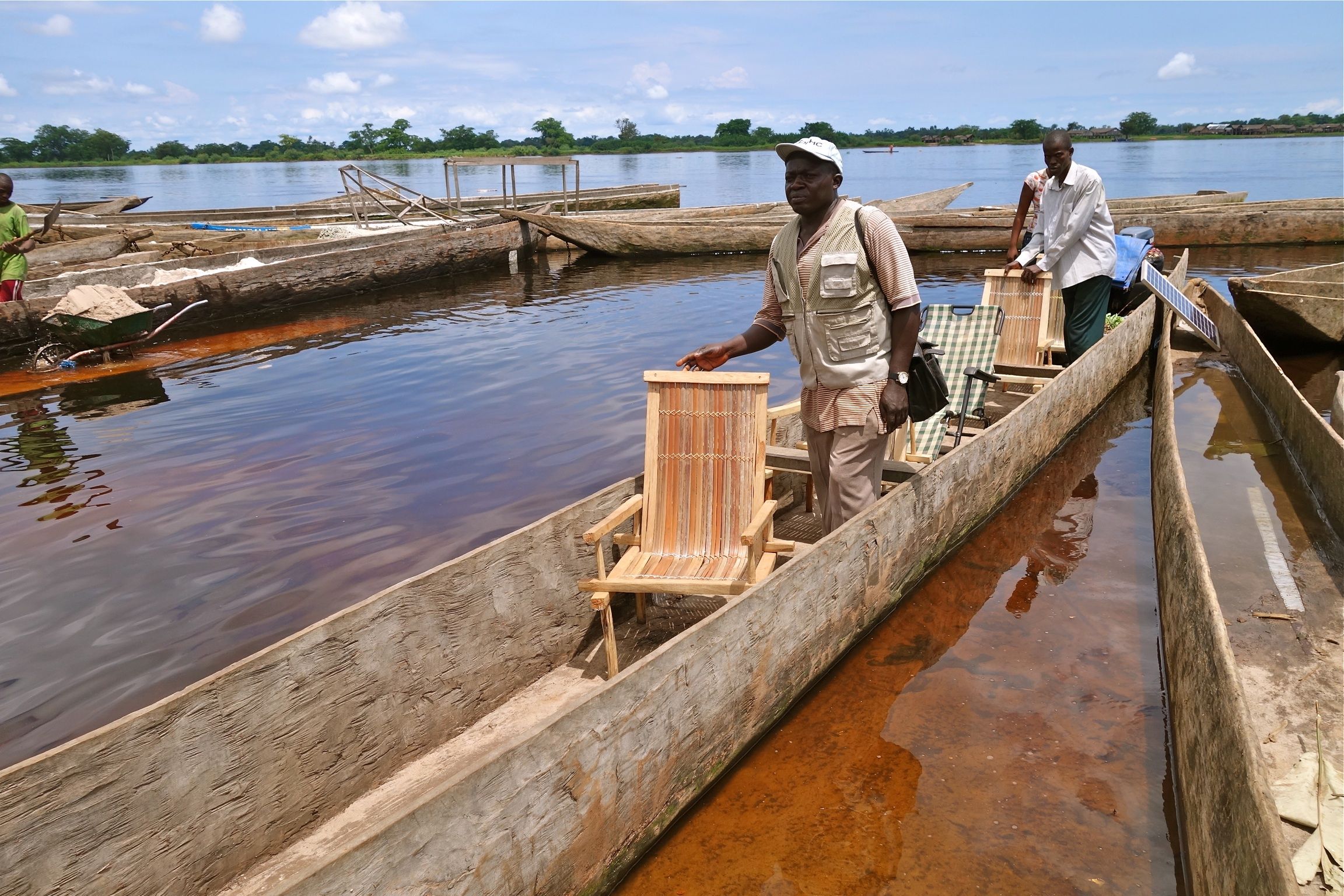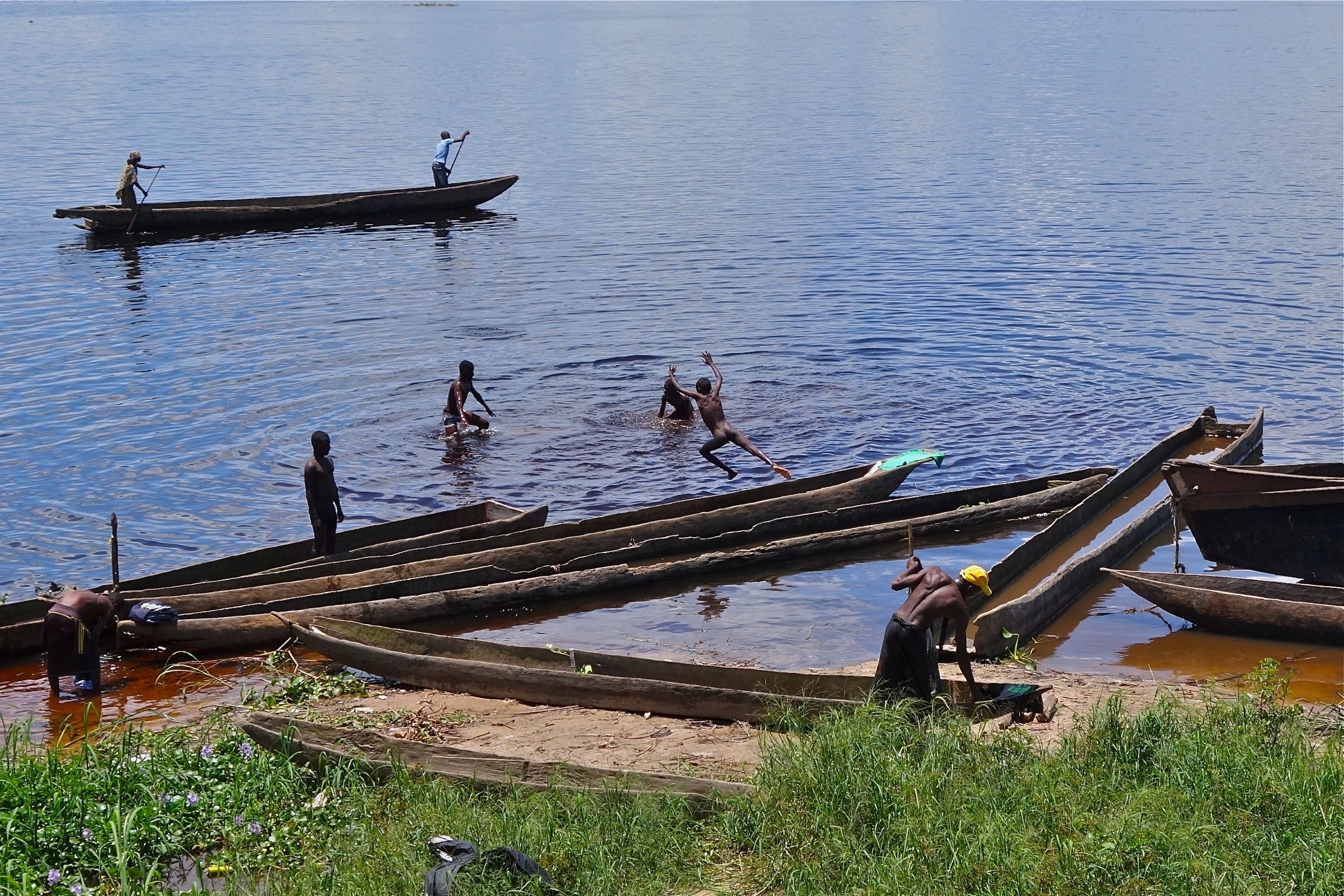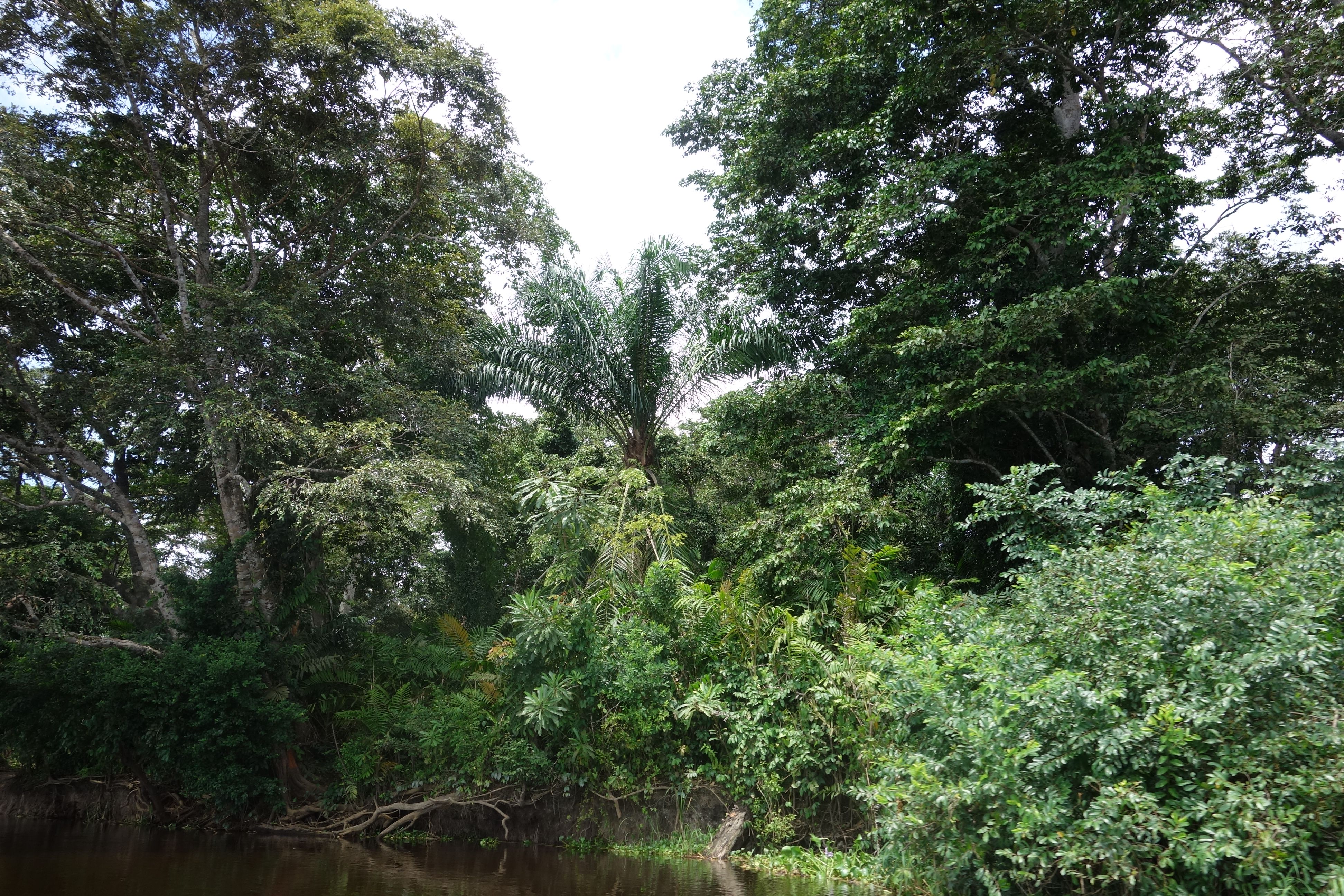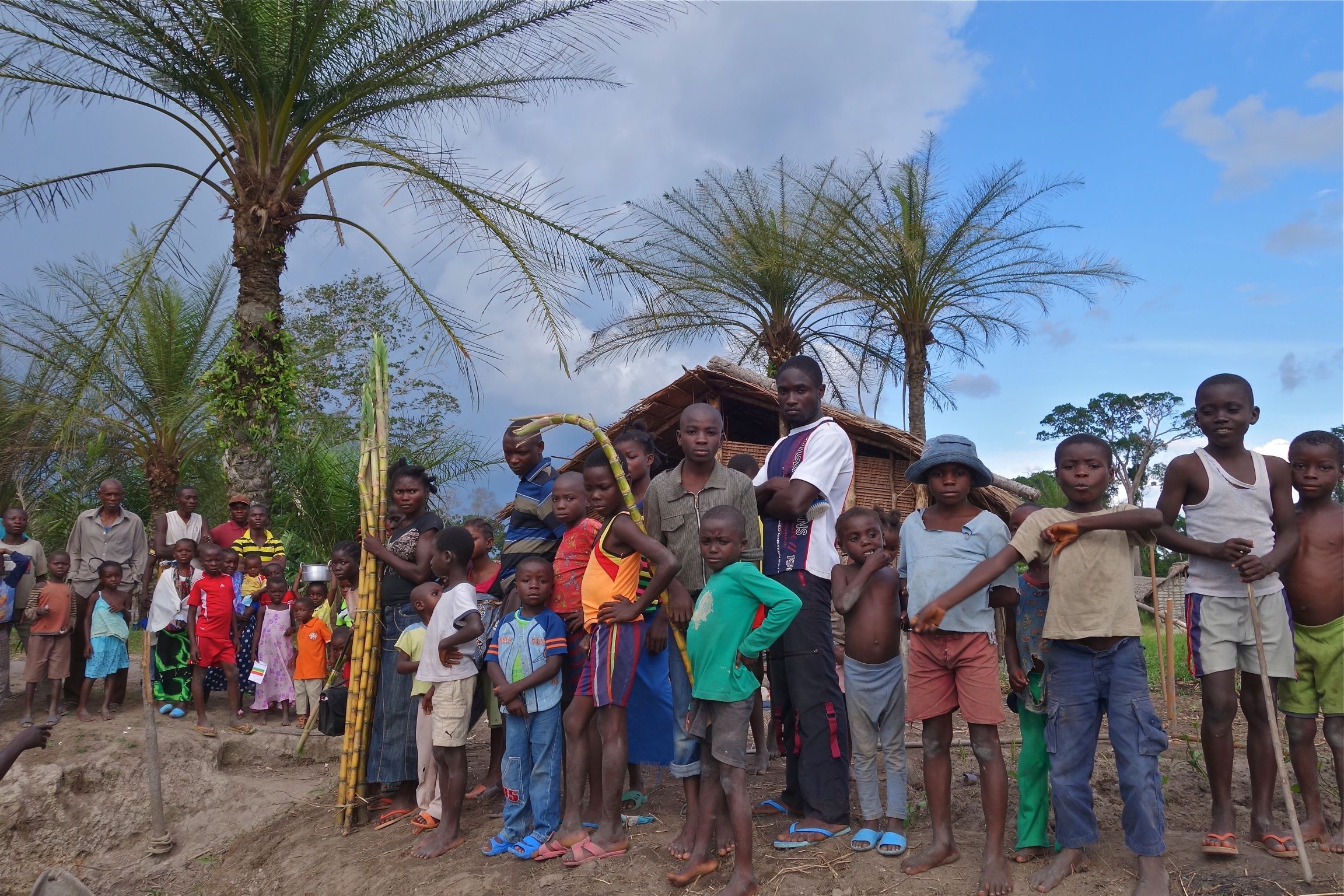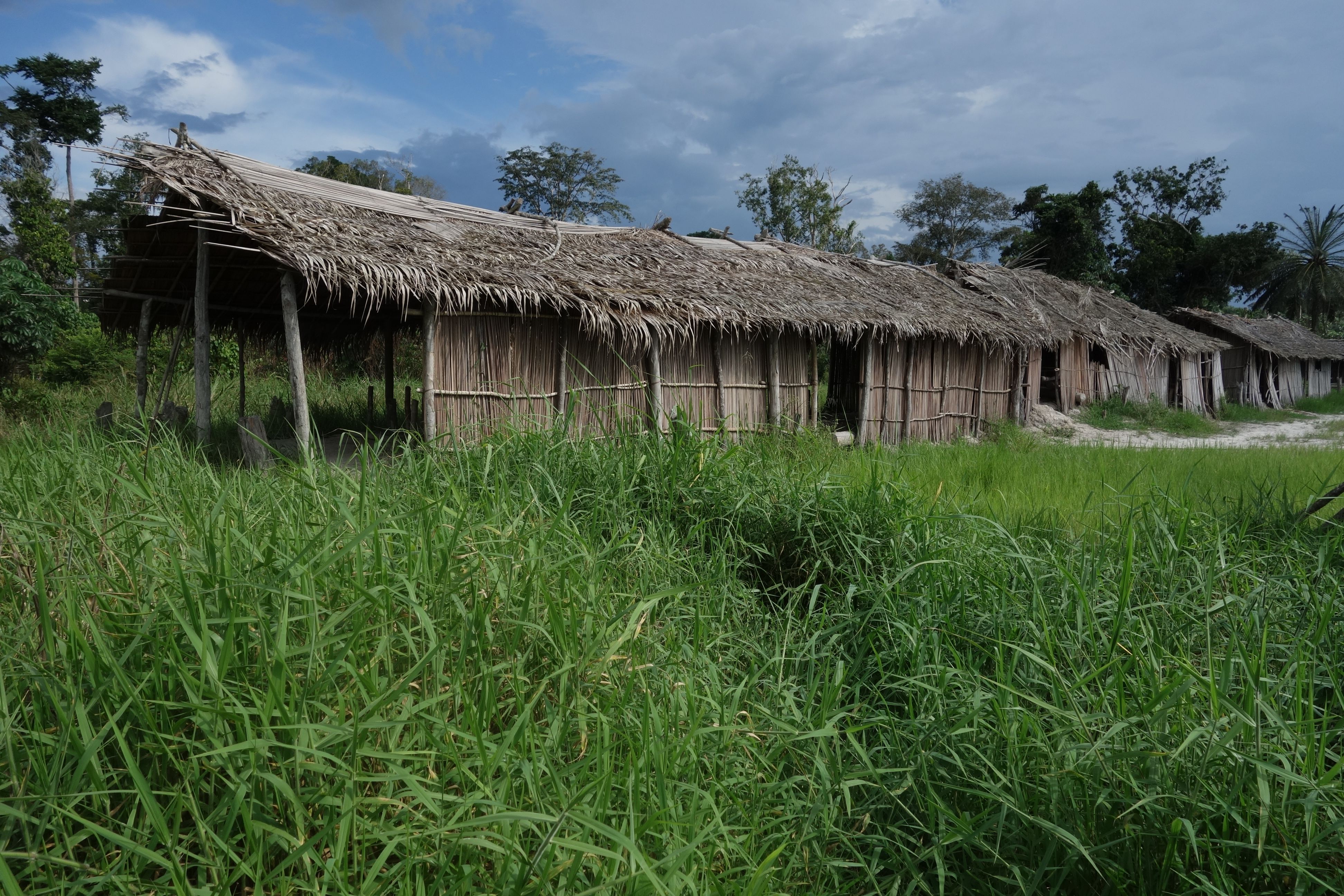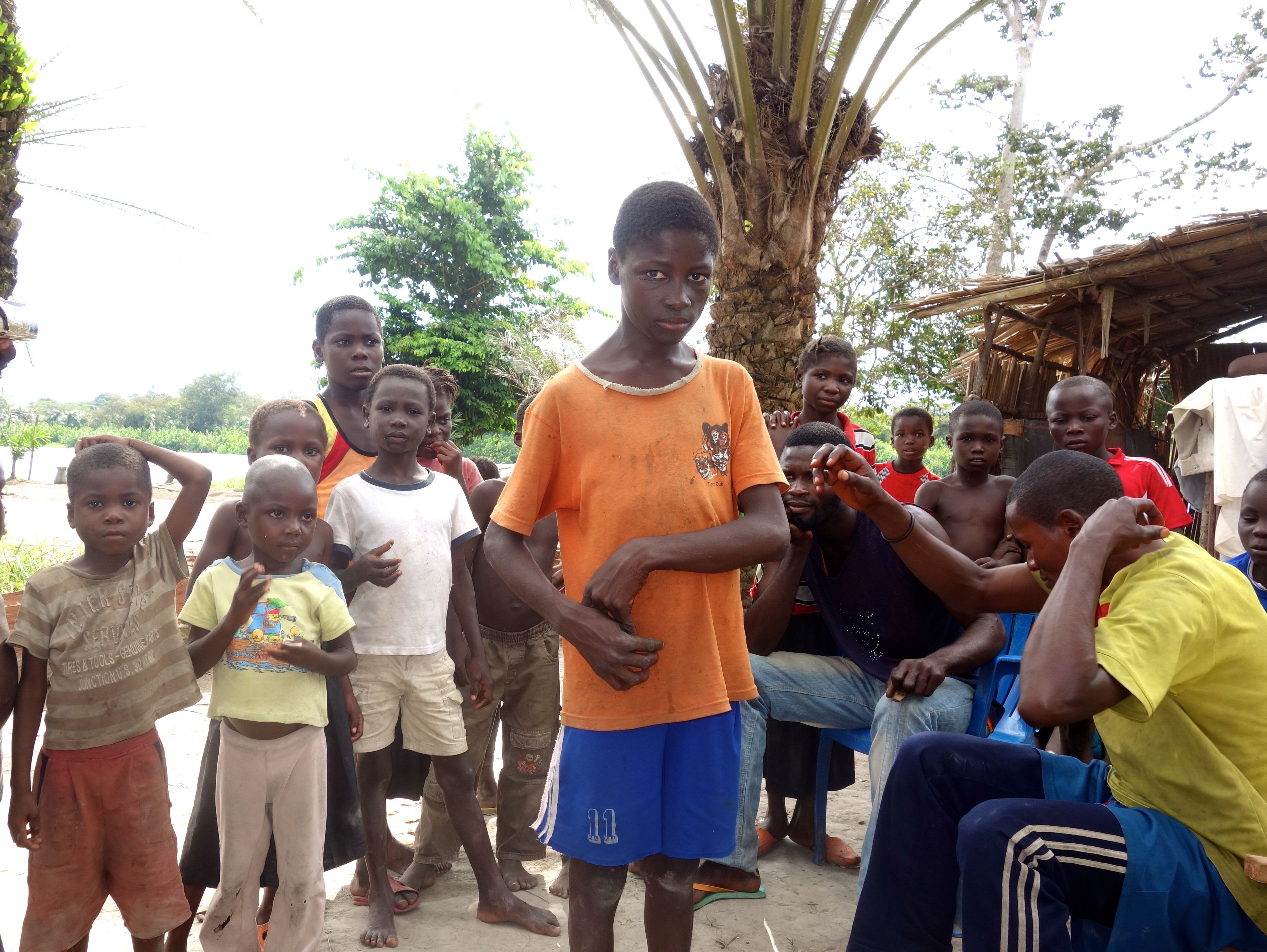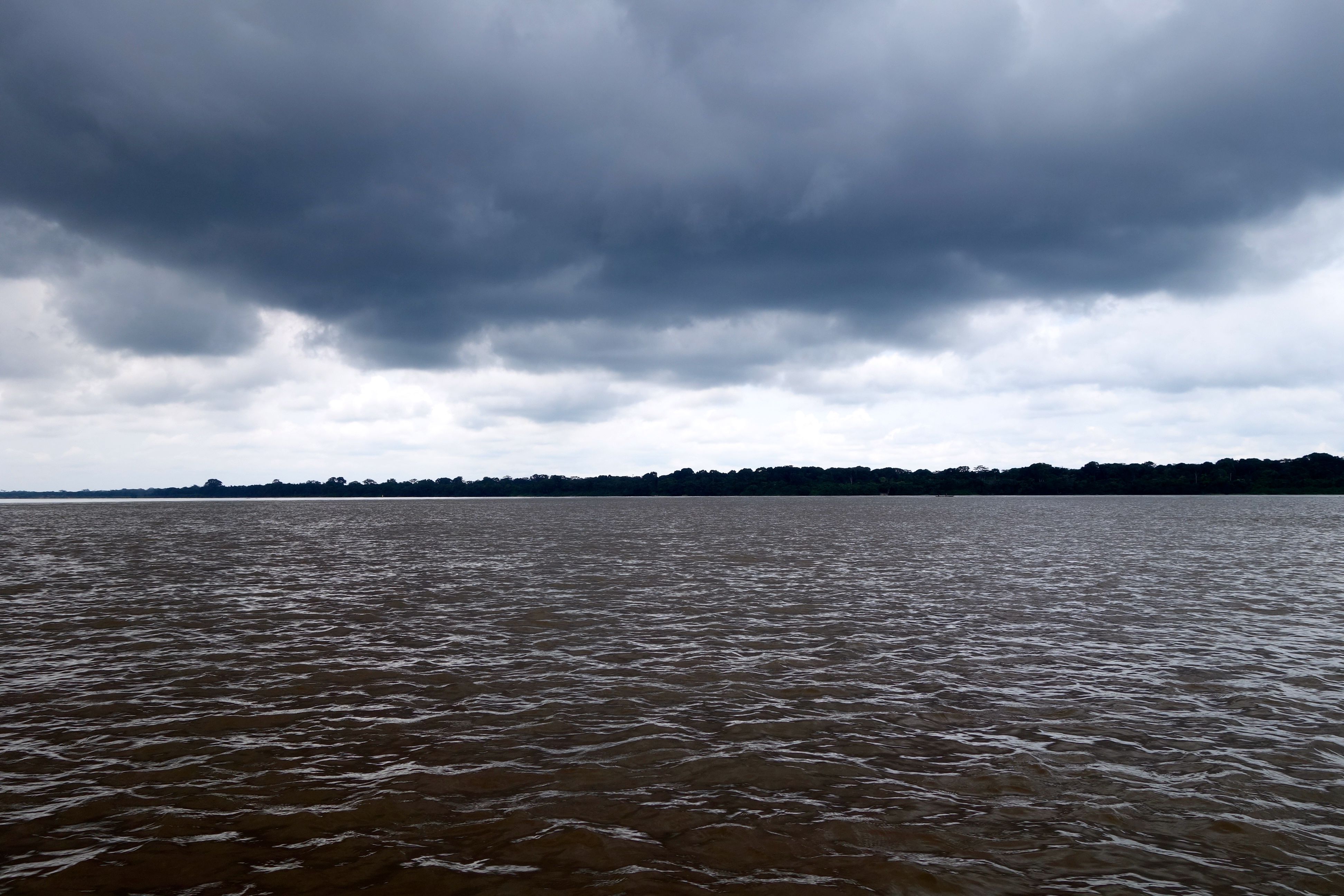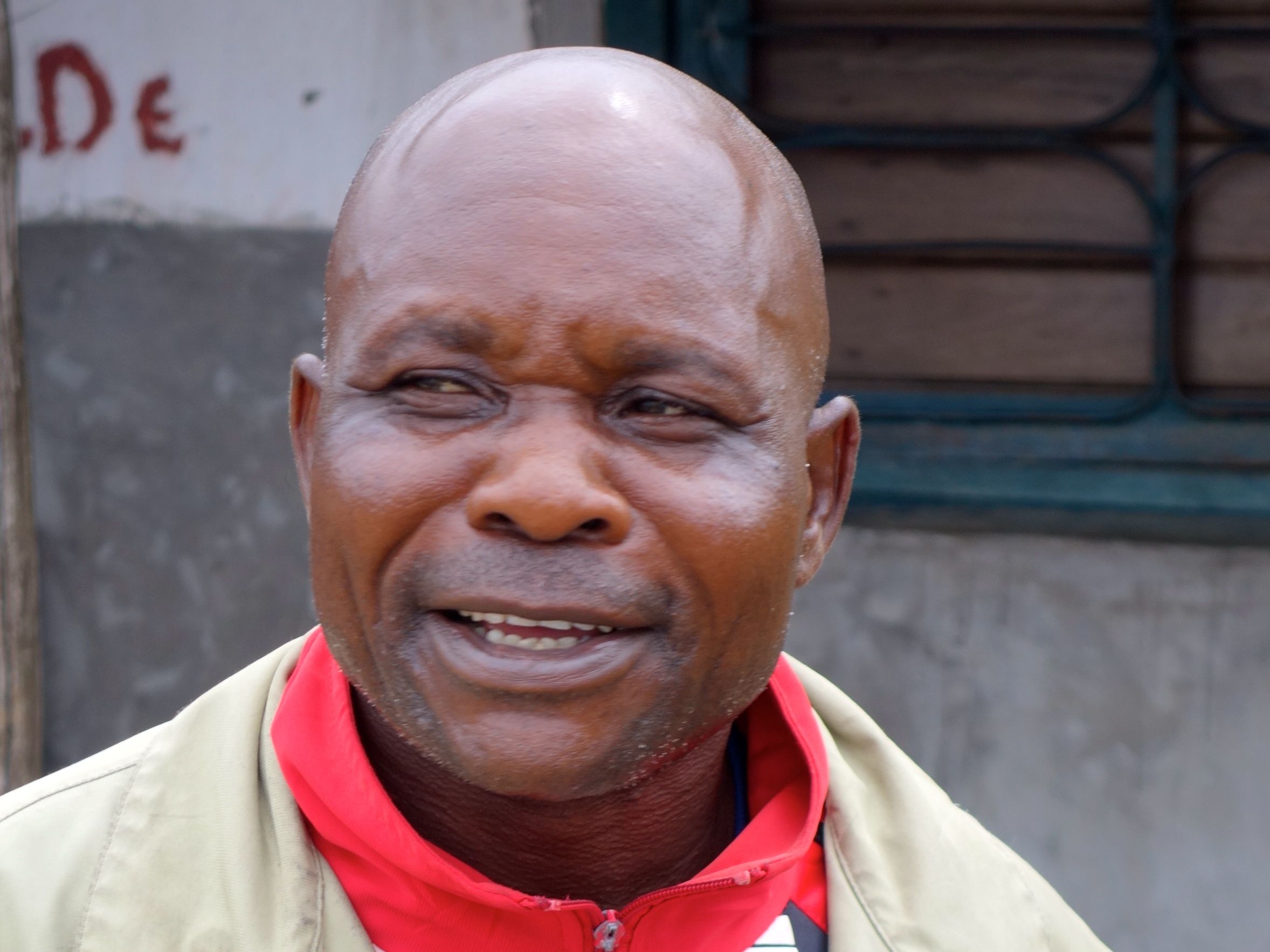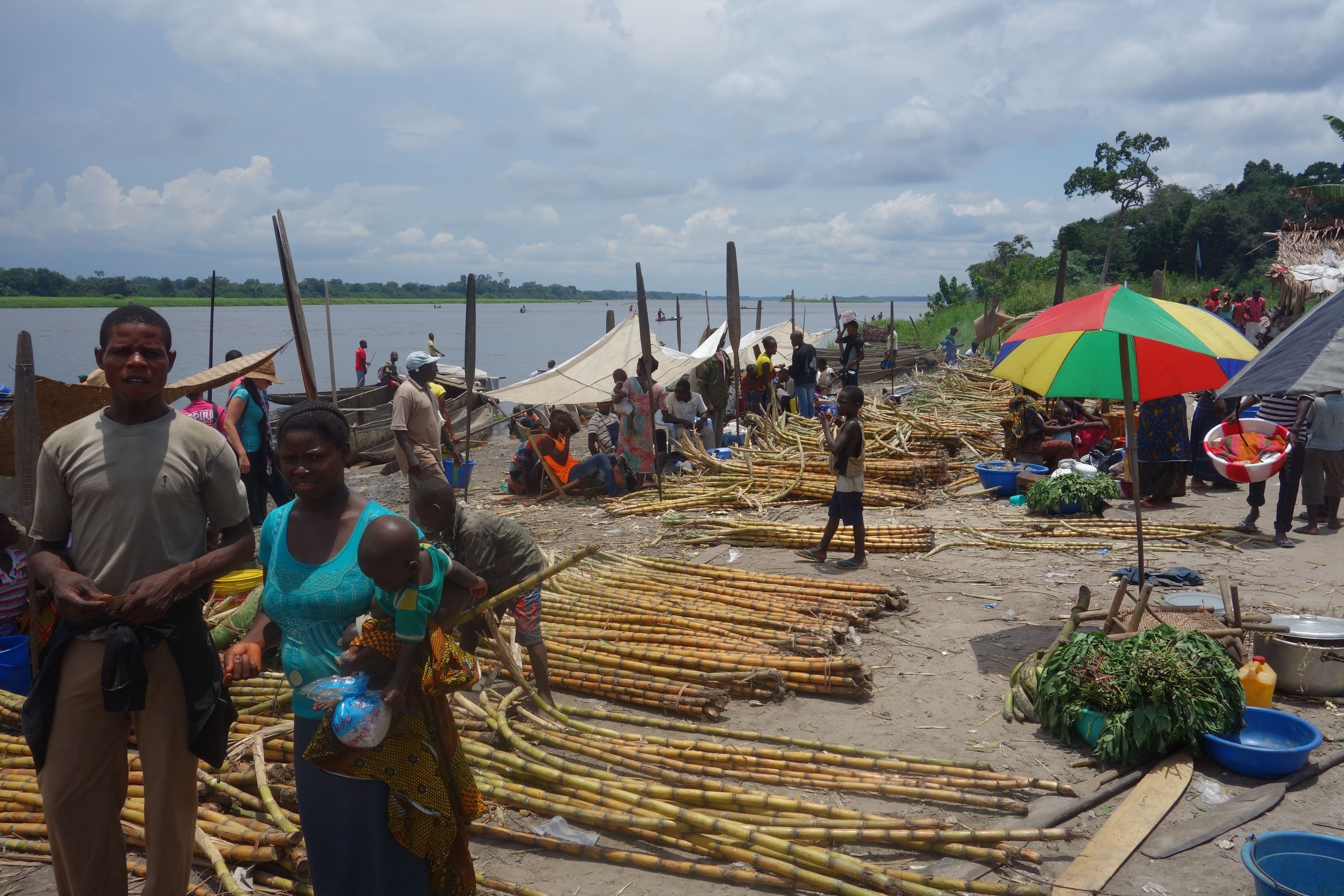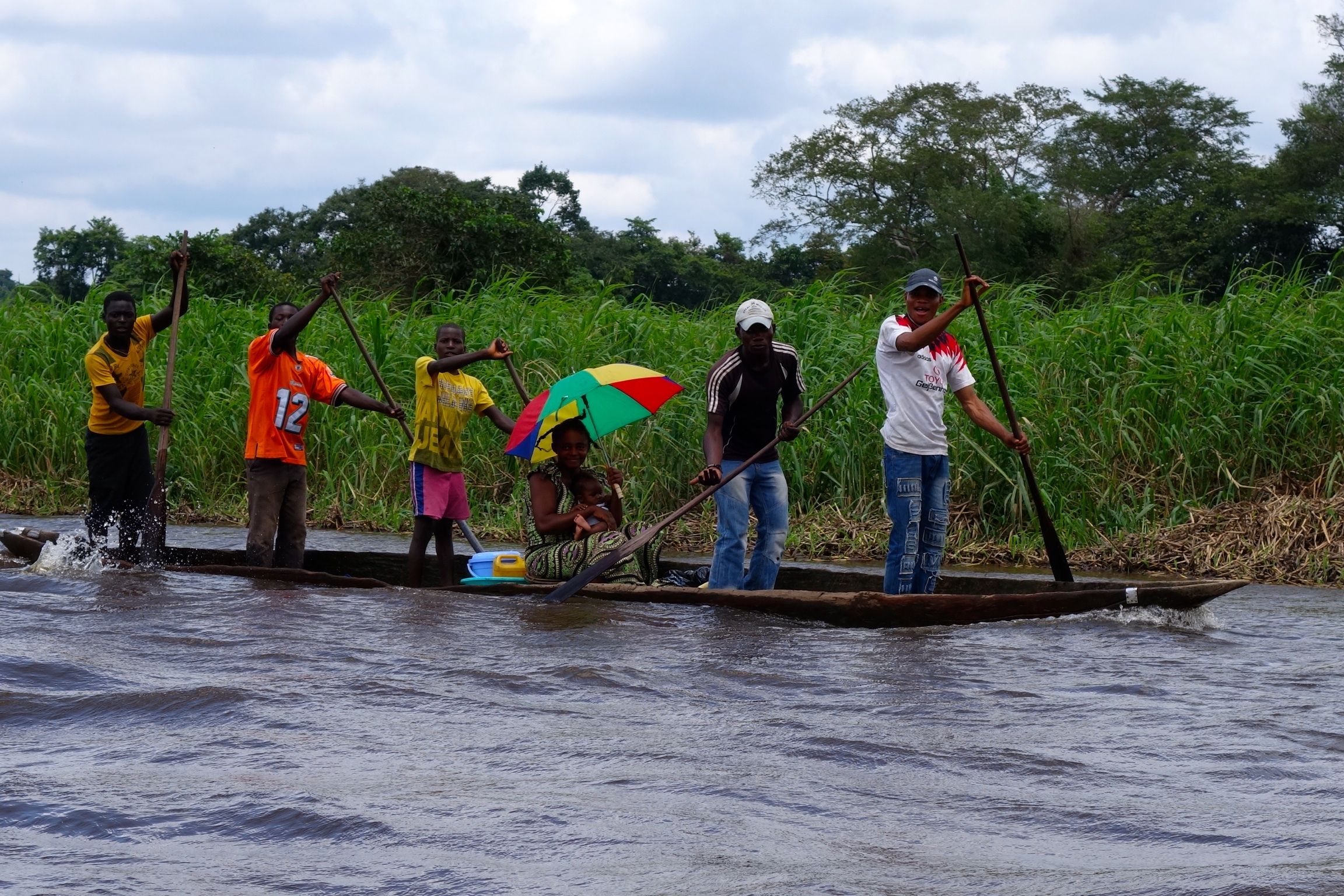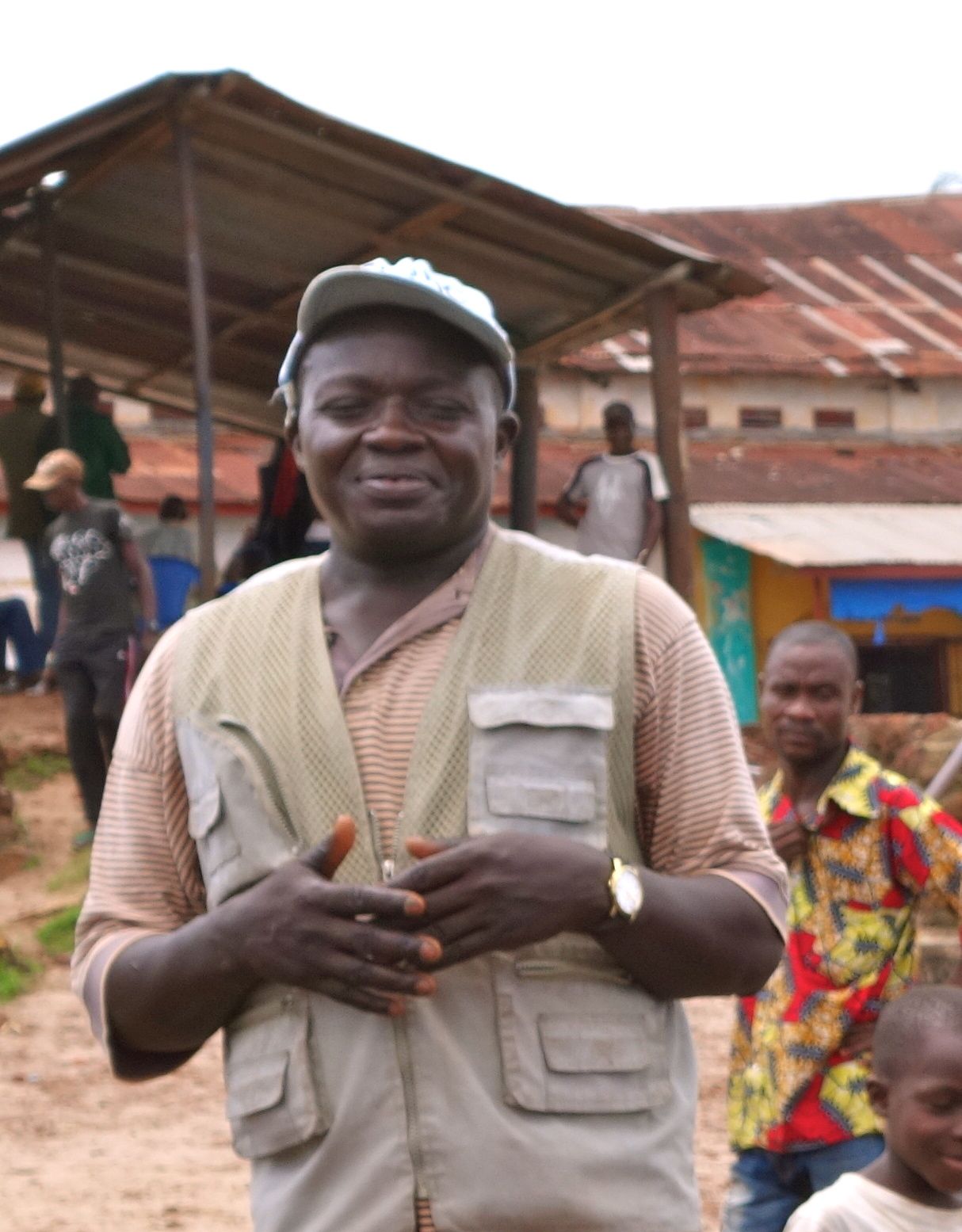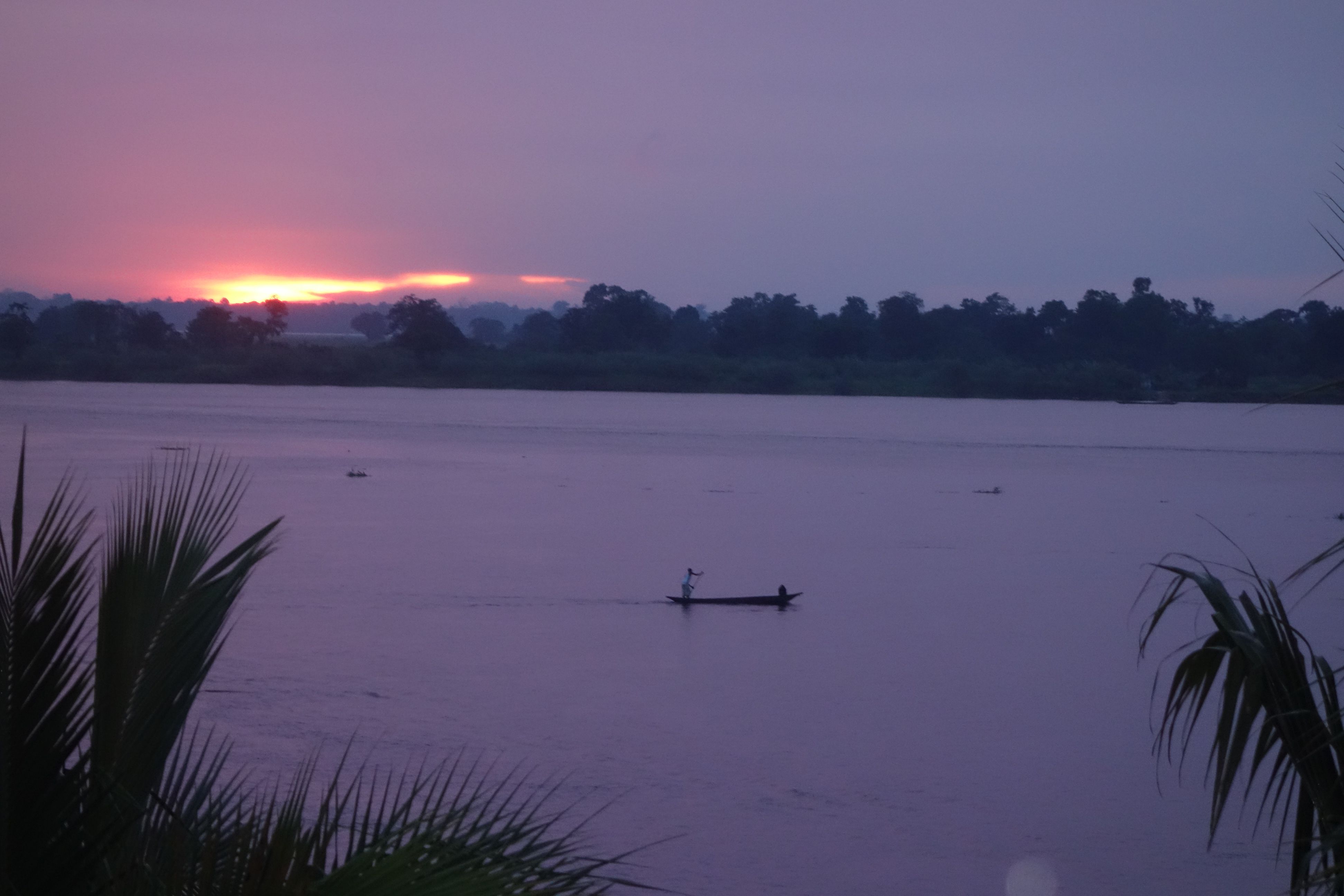We are traveling by pirogue, from Mbandaka, the capital of Equateur, 75 km up the Congo River to the village of Lolanga. The long and narrow boat is safe and sturdy, made out of the trunk of a Tola tree. The journey takes us past a dense forest and palm trees, thatched roof houses on stilts and children playing. In recent years the economy has suffered—commercial boats no longer ply the waters. But we are not alone on the water—men and women carry produce on rafts made from pirogues they have bound together, parents paddle their children home from school, and fishermen pull in their nets. We stop in villages to find a bustling market, a makeshift health clinic, an open-air church and a school with few if any resources.
For a narrative version of this slideshow, http://lab.pulitzercenter.org/on-the-congo/

